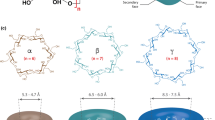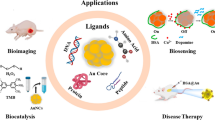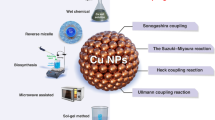Abstract
This article presents an original work contributing to the rational design of imprinted catalyst by molecular self-assembly toward predetermined high specificity. Assembling with p-nitrophenyl phosphate as the transition state analogue (TSA) of p-nitrophenyl acetate esterolysis and 1-vinylimidazole as the functional monomer, the imprinted catalyst was prepared. An increase in the amount of assembled monomer results in a higher activity of hydrolysis, which, however, does not lead to an improvement of specificity. The best specificity is shown at the optimal self-assembly (corresponding to a stoichiometric interaction of monomer-TSA). Higher or lower an amount of assembled monomer would lead to a dramatic decrease in this specificity. Related information indicates that these may be a result of increasing specific interaction between the TSA and binding sites, which make the catalyst capable of selectively recognizing the transition state and promoting the conversion from reactant to the transition state.










Similar content being viewed by others
References
Hirsch A.K.H., Fischer F.R., Diederich F. (2007) Angew. Chem. Int. Ed. 46(3):338
Das S., Incarvito C.D., Crabtree R.H., Brudvig G.W. (2006) Science 312(5782):1941
Shao N., Jin J.Y., Cheung S.M., Yang R.H., Chan W.H., Mo T. (2006) Angew. Chem. Int. Ed. 45(30):4944
Hu X., An Q., Li G., Tao S., Liu J. (2006) Angew. Chem. Int. Ed. 45(48):8145
Miyata T., Jige M., Nakaminami T., Uragami T. (2006) Proc. Natl. Acad. Sci. 103(5):1190
Lettau K., Warsinke A., Katterle M., Danielsson B., Scheller F.W. (2006) Angew. Chem. Int. Ed. 45(42):6986
Sellergren B. (2000) Angew. Chem. Int. Ed. 39(6):1031
Katz A., Davis M.E. (2000) Nature 403(6767):286
Greene N.T., Shimizu K.D. (2005) J. Am. Chem. Soc. 127(15):5695
Hart B.R., Rush D.J., Shea K.J. (2000) J. Am. Chem. Soc. 122(3):460
Kim H., Guiochon G. (2005) Anal. Chem. 77(19):6415
Wulff G. (2002) Chem. Rev. 102(1):1
Sellergren B., Karmalkar R.N., Shea K.J. (2000) J. Org. Chem. 65(13):4009
Wulff G., Gross T., Schonfeld R. (1997) Angew. Chem. Int. Ed. 36(18):1962
Shi R.X., Guo C.H., Zou X.H., Zhu C.Y., Zuo Y.J., Deng Y.D. (2002) Prog. Chem. 14(3):182
Zhou J., He X.W., Zhao J., Shi H.M. (1999) Chem. Res. Chin. Univ. 9(2):204
Spivak D.A., Simon R., Campbell J. (2004) Anal. Chim. Act. 504(1):23
Zhang D., Li S., Huang J., Luo G. (2006) High Perform. Polym. 8(6):949
Svenson J., Andersson H.S., Piletsky S.A., Nicholls I.A. (1998) J. Mol. Recogn. 11(1):83
Kawanami Y., Yunoki T., Nakamura A., Fujii K., Umano K., Yamauchi H., Masuda K. (1999) J. Mol. Catal. A 145(2):107
Odenbaugh A.L., Helms E.D., Iverson B.L. (2000) Bioorg. Med. Chem. 8(2):413
Luo L.T., Li S.J., Zhu Y. (2005) J. Serb. Chem. Soc. 70(12):1419
Takeda K., Kobayashi T. (2005) Sci. Technol. Adv. Mater. 6(2):165
Liu J.Q., Wulff G. (2004) J. Am. Chem. Soc. 126(24):7452
Volkmann A., Bruggemann O. (2006) React. Funct. Polym. 66(12):1725
Acknowledgments
The authors want to thank NSFC (Grant No.20603010), Hubei Provincial Science & Technology Department and Central China Normal University for presenting financial support to carry out this research work.
Author information
Authors and Affiliations
Corresponding author
Rights and permissions
About this article
Cite this article
Zhang, D., Li, S., Li, W. et al. Biomimic recognition and catalysis by an imprinted catalysts: a rational design of molecular self-assembly toward predetermined high specificity. Catal Lett 115, 169–175 (2007). https://doi.org/10.1007/s10562-007-9084-y
Received:
Revised:
Accepted:
Published:
Issue Date:
DOI: https://doi.org/10.1007/s10562-007-9084-y




